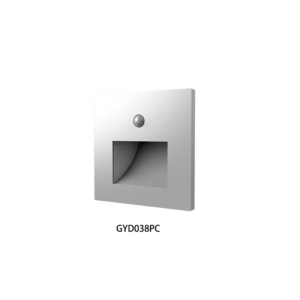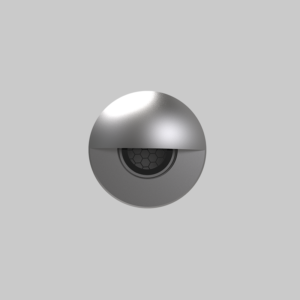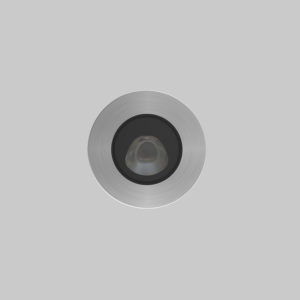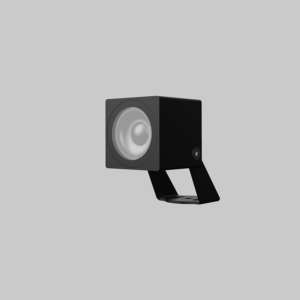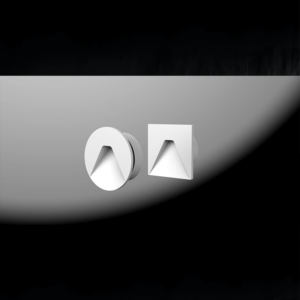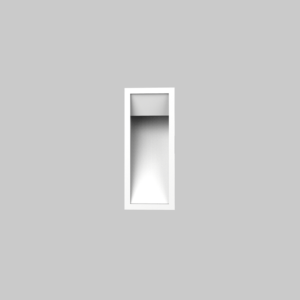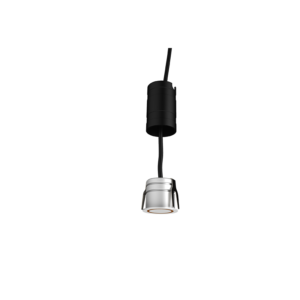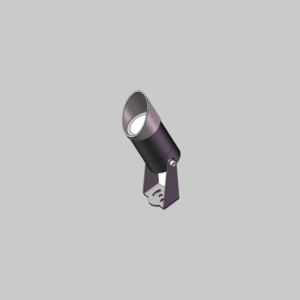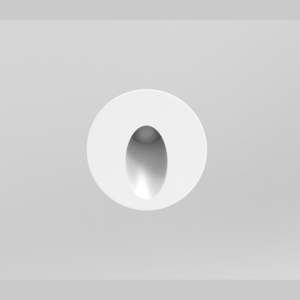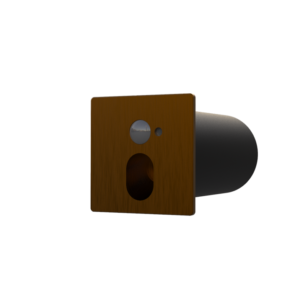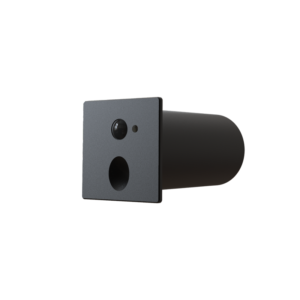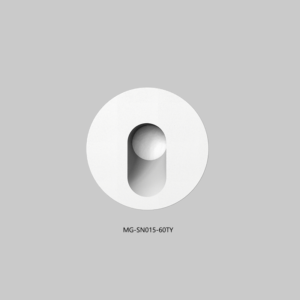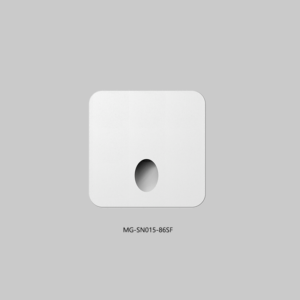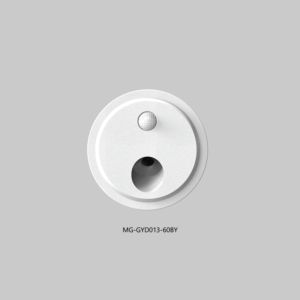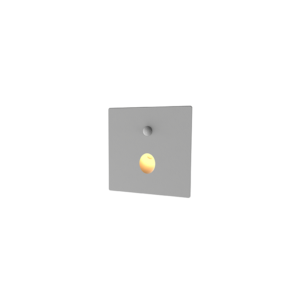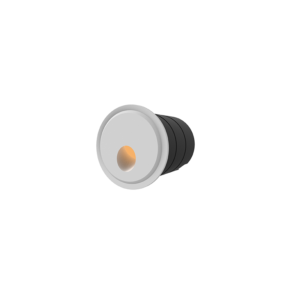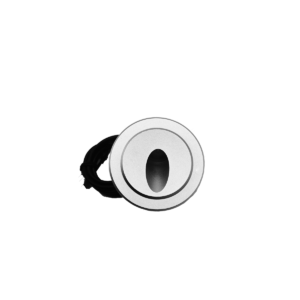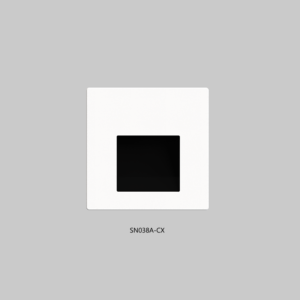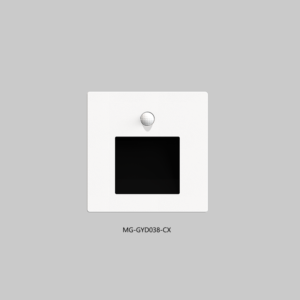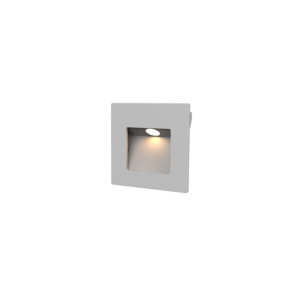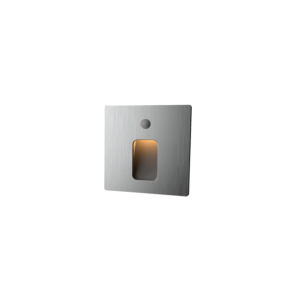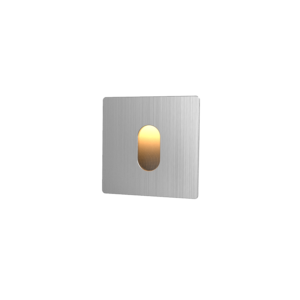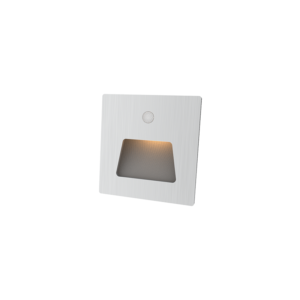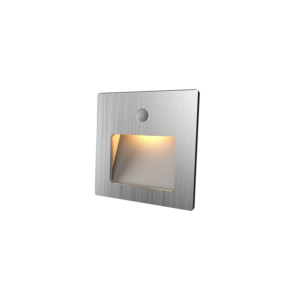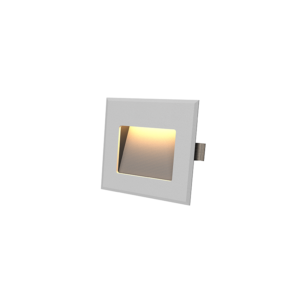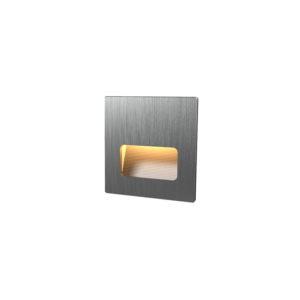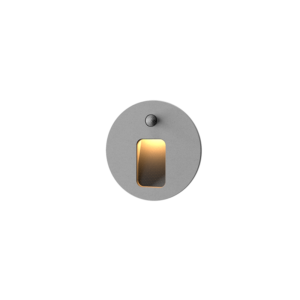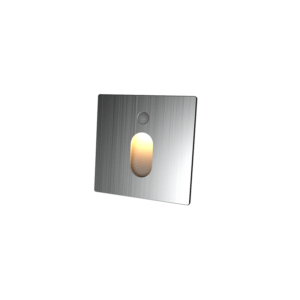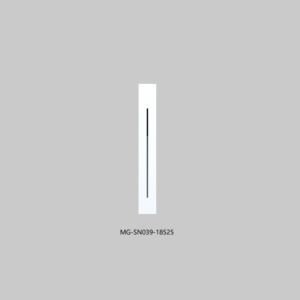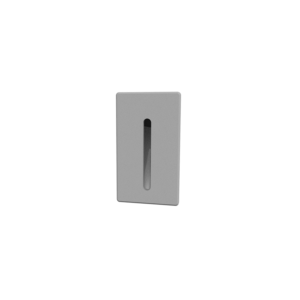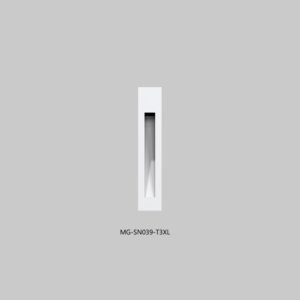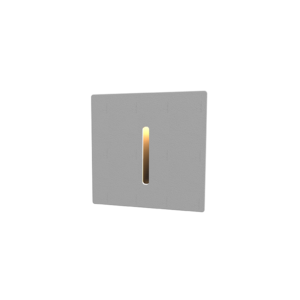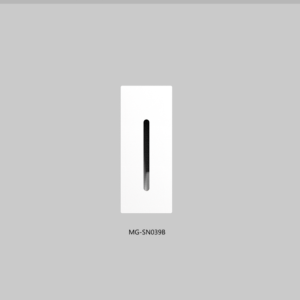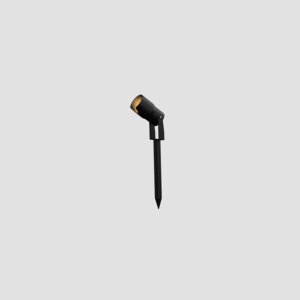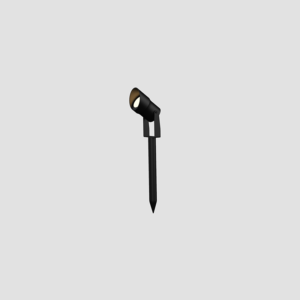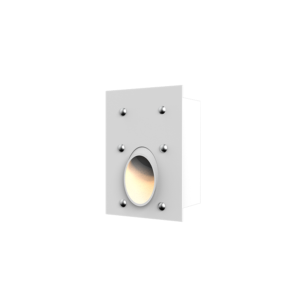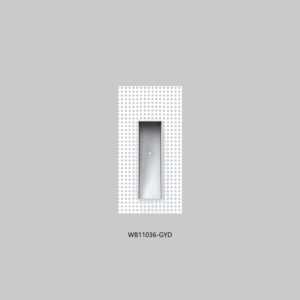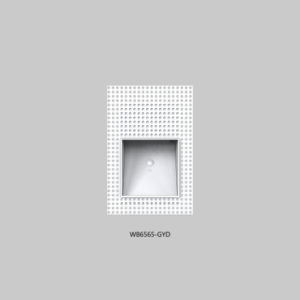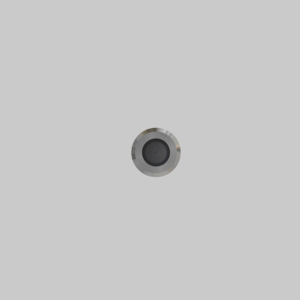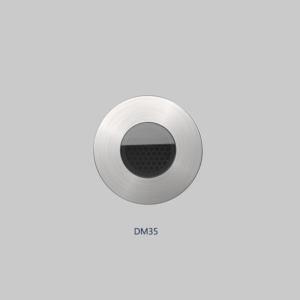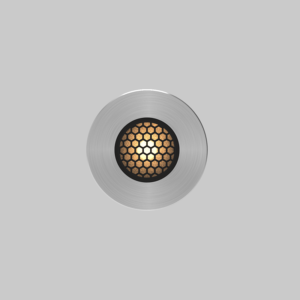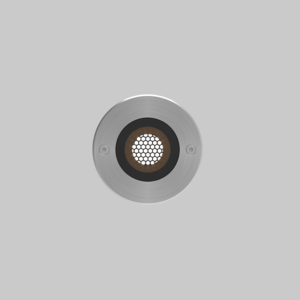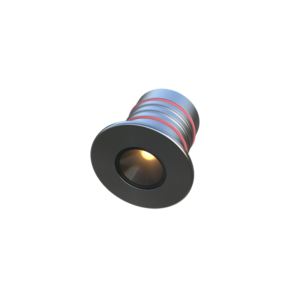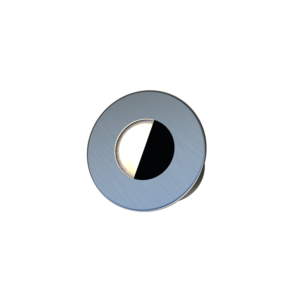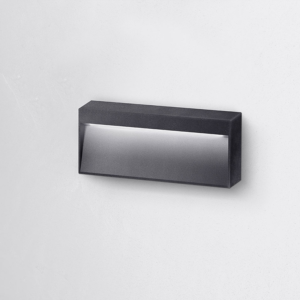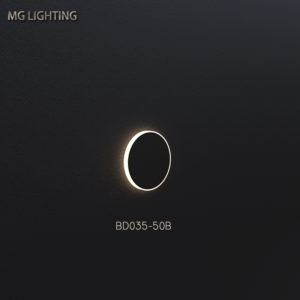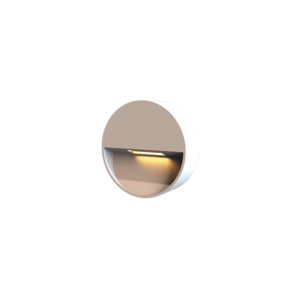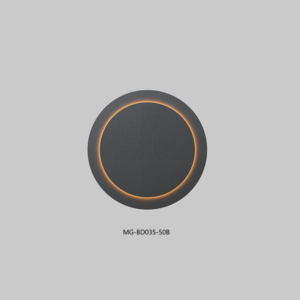The Critical Role of Step Lights in Modern Design & Safety
Step lighting has evolved from a purely functional safety feature to a design element that enhances architectural aesthetics. Properly installed step lights reduce nighttime tripping hazards by up to 80% while highlighting pathways, staircases, and landscaping. Among the most popular options, recessed step lights and surface-mounted step lights dominate the market. This guide breaks down their differences, advantages, and ideal use cases to help homeowners and designers make informed decisions.

What Are Recessed Step Lights?
Recessed step lights are fixtures fully embedded into stair treads, walls, or adjacent structures, creating a seamless, low-profile appearance.
Key Advantages:
- Sleek Aesthetic Integration: By sitting flush with surfaces, recessed lights preserve clean lines in modern architecture. They’re ideal for minimalist designs, luxury homes, or commercial spaces where visible fixtures could disrupt visual harmony.
- Superior Durability: Shielded within the installation surface, recessed lights withstand heavy foot traffic, weather exposure, and accidental impacts. Models with IP68 ratings excel in wet areas like pool decks or rainy climates.
- Glare-Free Illumination: Directional lighting minimizes light spillage, focusing beams precisely where needed—perfect for maintaining dark-sky compliance in eco-sensitive areas.
Limitations:
- Complex Installation: Cutting precise cavities for recessed fixtures requires professional tools and expertise. Retrofitting existing stairs may increase costs by 20–40%.
- Limited Flexibility: Once installed, repositioning recessed lights is challenging without structural modifications.

What Are Surface-Mounted Step Lights?
Surface-mounted step lights attach directly to stair surfaces or walls without requiring embedded cavities. These fixtures project slightly from the installation surface.
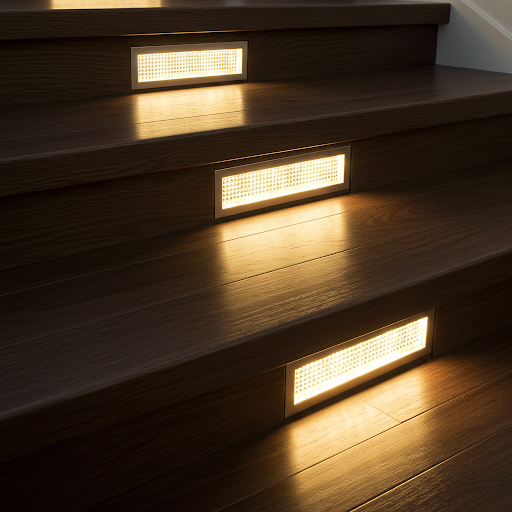
Key Advantages:
- Easy Installation & Retrofitting: No structural alterations are needed—simply mount with screws or adhesives. This makes them budget-friendly (up to 50% cheaper than recessed models) for DIY projects or historic buildings where drilling is restricted.
- Adjustable Lighting Angles: Many surface-mounted lights feature swivel heads or diffusers, allowing users to redirect light beams post-installation.
- Simplified Maintenance: Quick-access designs enable easy bulb replacements or repairs without dismantling stair components.

Limitations:
- Visibility Concerns: Protruding fixtures may clash with sleek designs or become tripping hazards in narrow staircases.
- Reduced Weather Resistance: While weatherproof options exist, exposed edges are more vulnerable to moisture infiltration compared to recessed alternatives.
Recessed vs Surface-Mounted Step Lights: Direct Comparison
| Feature | Recessed Step Lights | Surface-Mounted Step Lights |
|---|---|---|
| Installation Complexity | High (requires cutting/embedding) | Low (mounts directly) |
| Aesthetic Impact | Invisible by day, subtle at night | Visible fixture, modern/industrial |
| Durability | Excellent (protected housing) | Moderate (exposed edges) |
| Cost | $$$ (labor + materials) | $$ (minimal labor) |
| Ideal For | New builds, high-end designs | Renovations, rental properties, DIY |
How to Choose Between Recessed and Surface-Mounted Step Lights
Prioritize Design Goals: For invisible lighting in contemporary homes, recessed step lights deliver unmatched sophistication. For rustic or industrial styles, surface-mounted lights add functional decor.
Evaluate Installation Surfaces: Concrete or stone stairs support recessed lights better than fragile materials like wood.

Consider Long-Term Costs: While recessed lights have higher upfront costs, their durability often reduces replacement expenses over time.
Assess Environmental Factors: In coastal or rainy regions, recessed fixtures with sealed housings outperform surface-mounted alternatives.
Final Recommendations
Choose Recessed Step Lights If: You’re building anew, value discreet lighting, and need weatherproof performance.
Choose Surface-Mounted Step Lights If: You’re retrofitting stairs, working on a budget, or prefer adjustable lighting angles.
Both recessed and surface-mounted step lights enhance safety and aesthetics—the right choice depends on your project’s unique demands. Always consult a lighting specialist to balance functionality, design, and budget!
Recessed vs Surface-Mounted Step Lights: A Deep Dive into Recessed Lighting
Design & Installation Process
Embedded Design:
Recessed step lights require precise cavities carved into stairs or walls. The fixture’s housing is fully concealed, leaving only the light-emitting surface visible.

Installation Requirements:
- Pre-construction planning: Ideal for new builds or renovations where stair dimensions can accommodate recessed housings.
- Material compatibility: Works best with concrete, stone, or thick composite materials that retain structural integrity after cutting.
- Professional tools: Diamond-tipped blades or CNC routers ensure clean cuts without damaging surrounding surfaces.
Technical Integration:
- Flush Mounting: The fixture’s face aligns perfectly with the stair surface, eliminating tripping hazards.
- Weatherproof Seals: Gaskets and silicone coatings prevent moisture ingress, critical for outdoor applications.
- Heat Dissipation: Built-in thermal management systems prevent overheating in enclosed spaces.
Advantages of Recessed Step Lights
- Superior Aesthetics: By blending seamlessly into stairs, recessed fixtures maintain architectural integrity. This “invisible lighting” effect is prized in modern, minimalist, or high-end designs where surface-mounted step lights might disrupt visual flow.
- Enhanced Safety: No protruding edges reduce trip risks, especially on narrow stairs. Anti-glare optics ensure even illumination without blinding users.
- Durability & Weather Resistance: IP68-rated models withstand submersion, heavy rain, and temperature extremes. Powder-coated aluminum or stainless-steel housings resist corrosion, outperforming many surface-mounted step lights in harsh environments.
- Optimized Light Distribution: Recessed fixtures use reflectors or diffusers to spread light evenly across stair treads. Laboratory tests show 30% better coverage uniformity compared to basic surface-mounted step lights.

Limitations of Recessed Step Lights
- Complex Installation: Requires professional contractors with specialized tools. Retrofitting existing stairs may involve structural modifications, increasing costs by 25–50% versus surface-mounted step lights.
- Higher Upfront Costs: Materials: Reinforced housings and waterproof components raise unit prices. Labor: Cutting and sealing cavities adds 40–60% to installation expenses.
- Maintenance Challenges: Accessing bulbs or wiring requires dismantling parts of the stair structure. LED modules, while long-lasting, often need full fixture replacement if damaged.
When to Choose Embedded Lighting
Opt for Recessed Step Lights If:
- Designing a new staircase or high-traffic public space (e.g., museums, hotels).
- Prioritizing sleek, hazard-free aesthetics.
- Installing in wet climates or outdoor areas needing IP68 protection.

Consider Surface-Mounted Step Lights If:
- Working with historic buildings or fragile materials (e.g., vintage wood stairs).
- Seeking budget-friendly, DIY-friendly solutions.
- Needing adjustable lighting angles for temporary setups.
What Are Surface-Mounted Step Lights?
Surface-mounted step lights are standalone fixtures attached directly to stair treads, walls, or railings without requiring embedded cavities. Unlike recessed step lights, which integrate into surfaces, these lights sit visibly on top of structures, offering distinct functional and aesthetic trade-offs.
Design & Installation Features
Exterior Mounting:
Fixtures are secured using screws, adhesives, or brackets, making them ideal for retrofits or temporary installations. Common styles include:
- Linear strip lights: Slim profiles for modern stair edges.
- Dome lights: Rounded designs for softer illumination.
- Adjustable spotlights: Directional beams for accent lighting.
Material Adaptability:
Works on wood, concrete, metal, or composite stairs without structural modifications. This flexibility contrasts with recessed step lights, which often require specific stair thicknesses.
DIY-Friendly Setup:
Most models include pre-drilled holes and plug-and-play wiring, reducing installation time by 50–70% compared to recessed alternatives.
Advantages of Surface-Mounted Step Lights
- Simplified Installation: No cutting or embedding needed—ideal for historic buildings, rental properties, or fragile materials where drilling is restricted. Projects can often be completed in hours versus days for recessed step lights.
- Cost Efficiency: Fixtures cost 30–50% less than recessed models. Labor savings: Eliminates expenses for professional cutting/sealing.
- Easy Maintenance: Quick-access panels allow bulb replacements or repairs without damaging stairs. Modular designs let users swap faulty units in minutes, unlike recessed systems requiring structural disassembly.
- Lighting Flexibility: Adjustable heads or swivel bases enable precise beam targeting post-installation. Ideal for highlighting architectural details or seasonal decor, a feature rarely found in fixed recessed step lights.

Limitations of Surface-Mounted Step Lights
- Aesthetic Trade-Offs: Visible fixtures may clash with minimalist or high-end designs where recessed step lights excel. Protruding edges (5–15 mm) can disrupt clean lines in modern spaces.
- Safety Concerns: Slight tripping hazards on narrow stairs, especially with bulkier models. Less child/pet-friendly than flush-mounted recessed alternatives.
- Weather Vulnerability: Even weatherproof models (IP65) have exposed seams prone to dirt/moisture buildup over time. In coastal or extreme climates, recessed step lights with sealed housings typically last 2–3x longer.
- Light Spillage: Unshielded designs may cause glare, whereas recessed step lights often include baffles or diffusers for controlled output.
Surface-Mounted vs Recessed Step Lights: Critical Considerations
| Factor | Surface-Mounted Step Lights | Recessed Step Lights |
|---|---|---|
| Installation Speed | 1–3 hours (DIY-friendly) | 1–3 days (professional required) |
| Aesthetic Impact | Visible fixtures, versatile styles | Invisible, seamless integration |
| Upfront Cost | $ (budget-friendly) | $$$ (higher materials + labor) |
| Weather Resistance | Moderate (IP65 typical) | High (IP68 common) |
| Best Use Cases | Retrofits, rentals, adjustable lighting | New builds, luxury designs, wet climates |
When to Choose Surface-Mounted Step Lights
- Renovation Projects: Preserve existing structures in heritage homes or apartments where drilling is prohibited.
- Budget Constraints: Achieve functional lighting at 60% lower costs than recessed step lights.
- Temporary Needs: Illuminate event venues, holiday displays, or rental properties with removable fixtures.
- Adaptive Lighting: Redirect beams seasonally—e.g., spotlight winter ice melt systems or summer garden borders.
Optimizing Surface-Mounted Step Light Performance
Mitigate Safety Risks:
- Choose low-profile models under 10 mm thickness.
- Install fixtures on stair risers (vertical faces) instead of treads to avoid foot contact.
Enhance Weather Resistance:
- Apply silicone sealant around fixture edges during installation.
- Opt for marine-grade stainless steel or UV-resistant polycarbonate housings.
Improve Aesthetics:
- Match fixture finishes to stair materials (e.g., bronze for wood, brushed nickel for metal).
- Use warm white LEDs (2700–3000K) to blend with ambient lighting.
Key Factors for Choosing Between Recessed and Surface-Mounted Step Lights
When selecting step lighting, understanding the core differences between recessed step lights and surface-mounted step lights is crucial. Below, we break down six critical comparison dimensions to help you identify the best fit for your project.

1. Aesthetics & Design Integration
- Recessed Step Lights:
- ✔️ Seamless Integration: Fully embedded into stair surfaces, creating a “hidden lighting” effect that preserves architectural lines.
- ✔️ Modern Appeal: Ideal for contemporary, minimalist, or luxury designs where visible fixtures would disrupt visual harmony.
- ❌ Limited Style Options: Fixed designs lack the decorative flexibility of surface-mounted alternatives.
- Surface-Mounted Step Lights:
- ✔️ Versatile Styling: Available in linear strips, domes, or adjustable spotlights to match rustic, industrial, or traditional themes.
- ❌ Visible Fixtures: Protruding housings (5–20 mm) may clash with sleek designs.
2. Installation Complexity & Requirements
- Recessed Step Lights:
- ✔️ Permanent Stability: Once installed, fixtures remain securely embedded.
- ❌ Professional Labor Needed: Requires precise cutting, wiring, and sealing. Retrofitting existing stairs increases costs by 30–50%.
- Surface-Mounted Step Lights:
- ✔️ DIY-Friendly: Mount with basic tools in 1–3 hours. No structural modifications needed.
- ❌ Temporary Fixturing: Adhesive or screw-based mounts may loosen over time on uneven surfaces.
3. Safety & Durability
- Recessed Step Lights:
- ✔️ Trip Hazard Elimination: Flush-to-surface design minimizes risks on narrow stairs.
- ✔️ IP68 Weatherproofing: Withstands submersion, heavy rain, and extreme temperatures.
- ❌ Heat Buildup Risk: Poorly ventilated installations may reduce LED lifespan.
- Surface-Mounted Step Lights:
- ✔️ Cool Operation: Open-air design prevents overheating.
- ❌ Exposure Risks: Protruding edges pose tripping hazards; IP65-rated models are less durable in harsh climates vs. recessed step lights.
4. Maintenance & Repairs
- Recessed Step Lights:
- ✔️ Long-Term Reliability: High-quality LEDs last 50,000+ hours with minimal upkeep.
- ❌ Complex Access: Repairing wiring or replacing modules often requires dismantling stair components.
- Surface-Mounted Step Lights:
- ✔️ Easy Upkeep: Detachable covers enable quick bulb changes or cleaning.
- ❌ Frequent Adjustments: Fixtures may require repositioning due to vibration or weather shifts.
5. Cost & ROI
- Recessed Step Lights:
- ✔️ Long-Term Savings: Higher durability reduces replacement costs over 5–10 years.
- ❌ High Initial Investment: $150–300 per fixture (including professional installation).
- Surface-Mounted Step Lights:
- ✔️ Budget-Friendly: $50–120 per fixture, with DIY installation saving 40–60% on labor.
- ❌ Hidden Costs: Lower weather resistance may lead to earlier replacements in outdoor settings.
6. Ideal Applications
- Recessed Step Lights:
- ✔️ New construction, coastal homes, high-end commercial spaces.
- ✔️ Areas requiring strict safety compliance (e.g., public staircases).
- Surface-Mounted Step Lights:
- ✔️ Historic renovations, rental properties, temporary installations.
- ✔️ Projects needing adjustable or seasonal lighting (e.g., holiday displays).
Final Recommendations
Choose Recessed Step Lights If:
- Your priority is a polished, hazard-free design.
- The project involves new construction or harsh outdoor environments.
- Long-term durability outweighs upfront budget concerns.
Choose Surface-Mounted Step Lights If:
- You need affordable, flexible lighting for existing structures.
- DIY installation or temporary setups are required.
- Adjustable beam angles enhance functionality (e.g., accent lighting).
Pro Tip: Hybrid solutions exist! Combine recessed step lights on primary pathways with surface-mounted lights for accent areas to balance aesthetics and budget. Always consult a lighting designer to optimize placement and compliance with local building codes.
Key Decision Factors
Choosing between recessed step lights and surface-mounted step lights requires balancing aesthetics, functionality, and budget. Below are the critical considerations to guide your choice.

1. Architectural Style & Aesthetic Goals
- Recessed Step Lights:
- Best for modern, minimalist, or high-end designs where invisible lighting enhances clean lines.
- Avoid if your project features ornate or vintage styling—visible fixtures may better complement traditional aesthetics.
- Surface-Mounted Step Lights:
- Ideal for industrial, rustic, or eclectic themes. Choose adjustable spotlights to highlight textured walls or decorative stair rails.
- Tip: Match fixture finishes (e.g., brushed nickel, oil-rubbed bronze) to existing hardware for cohesive styling.
2. Installation Environment & Usage Frequency
- High-Traffic or Wet Areas (e.g., pool decks, public stairs):
- ✔️ Recessed Step Lights: IP68-rated models resist water, dirt, and physical impacts.
- ❌ Avoid basic surface-mounted lights here—exposed edges degrade faster in harsh conditions.
- Low-Traffic or Dry Areas (e.g., indoor residential stairs):
- ✔️ Surface-Mounted Step Lights: Save costs with IP65-rated fixtures while maintaining easy access for dusting.
3. Budget & Long-Term Costs
- Upfront Budget:
- Surface-mounted step lights cost 60–70% less than recessed models, including installation.
- Example: Lighting a 10-step staircase costs ~$500 with surface-mounted vs. $1,500+ for recessed.
- Long-Term ROI:
- Recessed step lights last 2x longer outdoors (10+ years vs. 5–8 years), reducing replacement frequency.
- Factor in maintenance: Recessed models may require $200–500 in professional repairs vs. DIY-friendly surface-mounted fixes.
4. Installation Timeline & Future Upgrades
- Urgent Projects:
- Surface-mounted step lights install in hours—perfect for tight deadlines or temporary setups (e.g., event venues).
- Future-Proofing:
- Recessed step lights are harder to upgrade but offer timeless appeal. Pair with smart LED drivers during installation for dimming or color control.
- Surface-mounted lights allow easy tech upgrades—swap fixtures for newer models without structural changes.
Scenario-Based Recommendations
1. Residential Homes
- Modern Suburban Houses:
- Prioritize recessed step lights on main entryways and patio stairs for curb appeal. Use surface-mounted lights in garages or basements for utility areas.
- Historic Homes:
- Preserve original stairs with non-invasive surface-mounted step lights. Opt for period-appropriate designs like brass lantern styles.
2. Commercial Spaces
- Hotels/Retail Stores:
- Use recessed step lights in lobbies and high-traffic corridors for premium safety and style. Add surface-mounted accent lights near displays or signage for directional focus.
- Office Buildings:
- Combine both: Recessed lights on main staircases, surface-mounted task lights near emergency exits for compliance.
3. Public Areas
- Parks/Public Plazas:
- Recessed step lights with vandal-proof ratings ensure durability.
- Apartment Complexes:
- Surface-mounted step lights simplify maintenance across multiple units; choose tamper-resistant screws to deter theft.
Balancing Aesthetics, Safety, and Practicality
- Safety First:
- In homes with children/elderly, prioritize recessed step lights on narrow stairs to eliminate trip hazards.
- For outdoor steps, ensure all fixtures (recessed or surface-mounted) have anti-slip ratings.
- Aesthetic Compromises:
- If budget limits recessed lighting, use low-profile surface-mounted step lights (under 8mm height) on stair risers instead of treads.
- Smart Hybrid Solutions:
- Install recessed step lights on primary pathways and surface-mounted lights for garden steps or decorative zones.
Final Checklist Before Buying
- ☑️ Test fixture samples on-site to assess daytime visibility and nighttime glare.
- ☑️ Verify local building codes—some regions mandate specific IP ratings for outdoor steps.
- ☑️ For recessed step lights, confirm stair thickness can accommodate housing depth (typically 1–2 inches).
- ☑️ For surface-mounted step lights, ensure adjustable angles meet your lighting spread needs.
Pro Tip: Still undecided? Many manufacturers offer modular systems that combine recessed and surface-mounted designs. For example, embed recessed step lights on treads while adding surface-mounted rail lights for ambient glow. This approach maximizes flexibility without sacrificing coherence.



